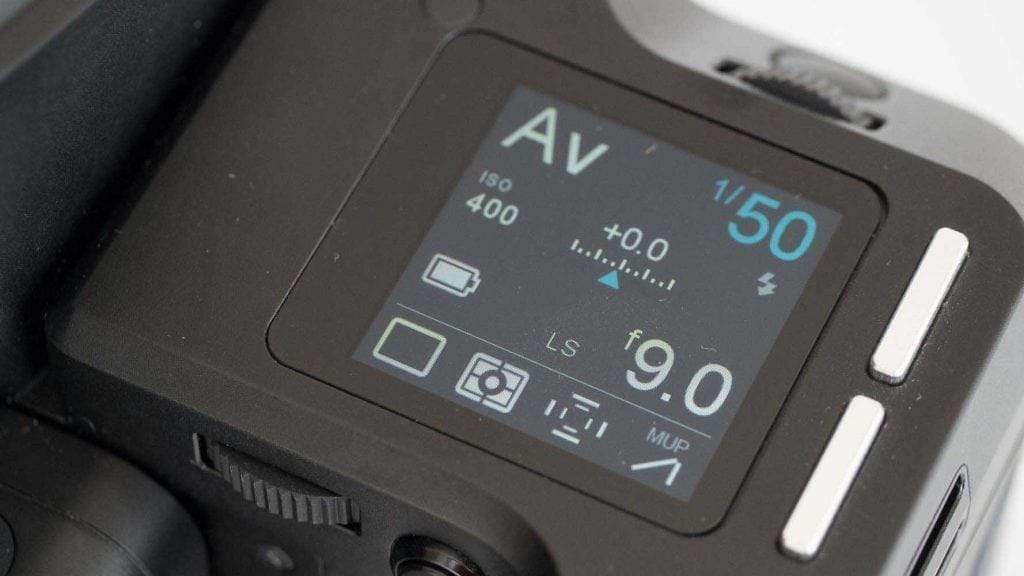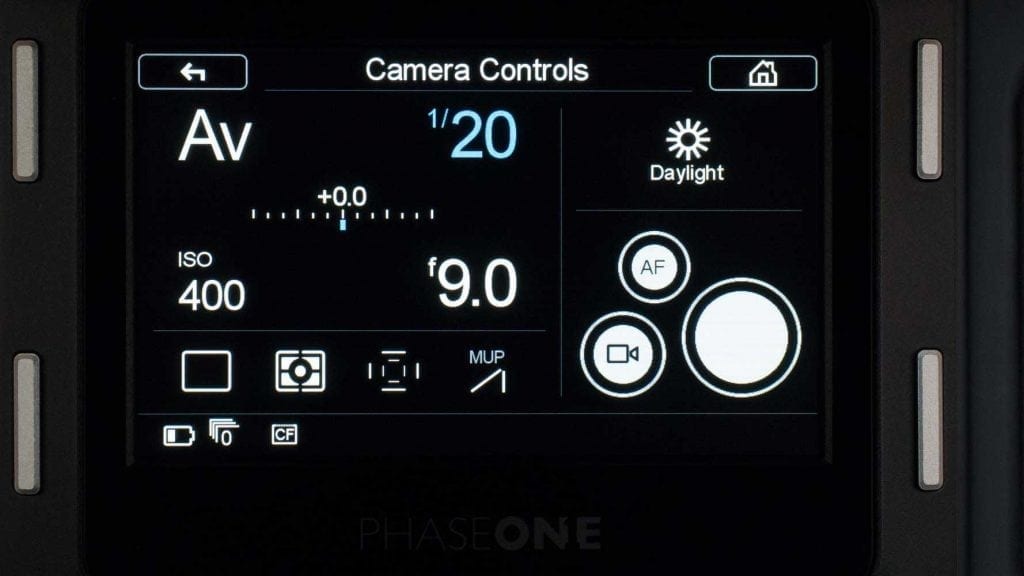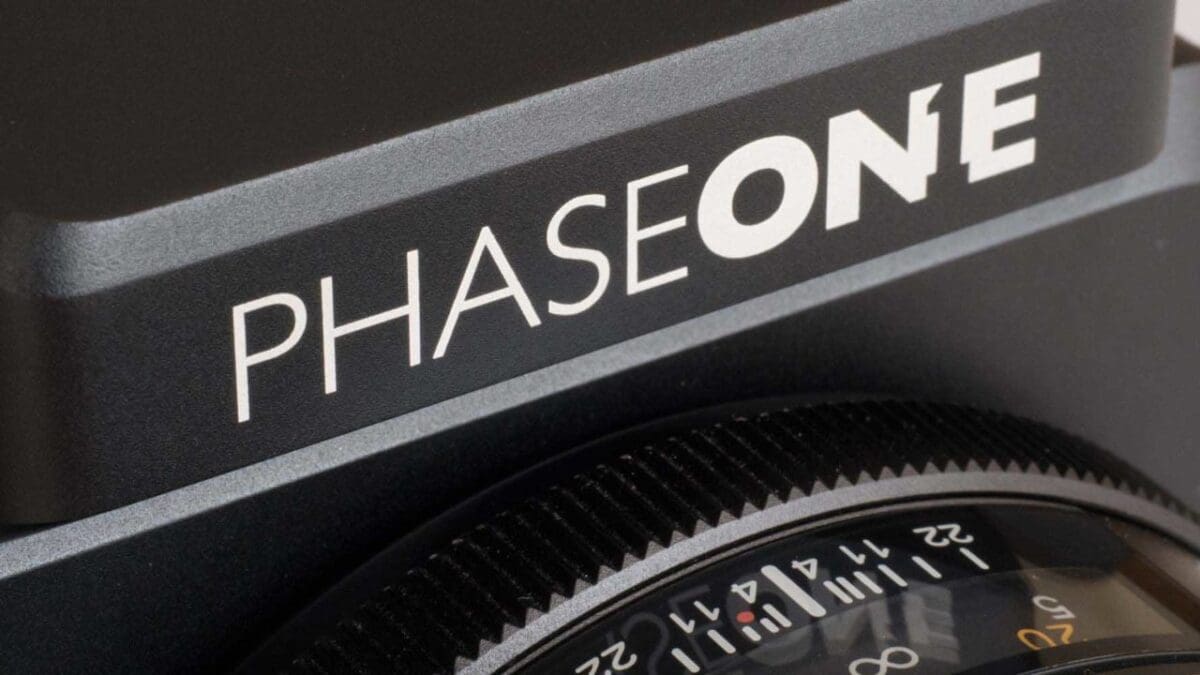Snap Verdict
The Phase one XF 100MP is a medium format camera system that pairs a 100 million-pixel digital back (the Phase One IQ3) with a Phase One XF body. It’s a modular DSLR-design system and the lens, back and viewfinder can all be removed and swapped for alternatives.
The sensor inside the IQ3 back measures 53.7 x 40.4mm, approximately 2.5x the size of a full-frame or 35mm format camera.
While it’s big and heavy, the XF 100MP has wonderful touches including a seismograph that can ensure that vibrations have died down before the shutter is fired and an Exposure Zone view that helps you capture the maximum amount of data to achieve superb looking images. The interface is also modern, using touch-screen control in addition to a relatively small collection of buttons and three dials.
Key features
One of the best things I ever did for my photography was buying a Mamiya RB67 Pro SD. It was big, heavy and built to last. Without a built-in meter and with manual film advance and the need to cock the shutter manually between shots, it slowed me down and made me think much more about what I was doing. The fact that it only produced ten 6x7cm exposures on every roll of 120 film also had a bearing on the level of attention I paid to each shot.
Things have moved on a lot since those days, and I’ve used many cameras of different formats since, but getting hold of the Phase One XF 100Mp, or more correctly, the Phase One XF with the IQ3 back, brought back a taste of my RB67 experience.
Like the RB67, the Phase One XF is a modular camera, which means key elements including the lens, back and viewfinder are interchangeable. In the 100MP configuration the XF is fitted with Phase One’s IQ3 back which houses a Sony sensor that measures 53.7 x 40.4mm and has 101 million effective pixels. That means that at 300ppi, the images it produces measure 98.3 x 73.2cm.
While there are 101 million pixels on the sensor in the IQ3, it’s around 2.5x the size of the sensor in a full-frame camera like the 30Mp Canon 5D Mark IV or the 50Mp Canon 5DS. Which means the pixels on the Phase One’s sensor are bigger than the ones on the 5DS sensor – good news for noise control. It also means that Phase One has the confidence to give the camera a sensitivity range of ISO 50-12,800.
As you’d expect with a modern digital medium format camera, the XF 100MP has an autofocus system and as it’s a DSLR there’s a dedicated autofocus sensor. There’s just one AF point, which is located at the centre of the frame so the focus-and-recompose technique is often required. Alternatively, you can focus manually.
Phase One has given the XF 100MP a few other modern features including two touch-sensitive screens and a clever Focus Stacking option that simplifies taking a sequence of images with the focus set between two specified points. With each image weighing-in at around 140MB, stitching the images together to make one picture with greater depth of field takes some serious processing power, but it’s likely to be a useful feature for photographers shooting small subjects close-up.

[table id=72 /]
Build and handling
Just like my Mamiya, the XF 100MP is a beast of a camera. With the prism viewfinder (a waist-level finder is available) and the 80mm standard lens, it weighs in excess of 2.5Kg. Nevertheless, there’s a substantial grip, that’s comfortable to hold and the camera can be used hand-held. However, given the shallow depth of field and the heft of the mirror movements, it makes to use the camera on a tripod whenever feasible.
On the top of the camera body is small touch-screen which gives a quick and convenient way of controlling the camera, especially when it’s mounted on a tripod below eye-level. There’s also a 3.2-inch touch-screen on the camera back, which in addition to navigating the menu can be used to assess the scene in live view mode.

Three dials, two on the back with-in thumb-reach and one on the front, enable swift adjustments of aspects such as shutter speed, aperture and sensitivity.
There are also two buttons on either side of the screen and their function changes depending upon the display. After a short familiarisation period using the XF and IQ3 becomes easy and you soon find yourself making the setting selections that you want.

As it’s a larger than average DSLR, the XF has a substantial mirror that is prone to introducing some vibration that can soften the image and defeat the object of the 100Mp sensor. However, in addition to mirror lock-up mode, it’s also possible to engage the services of the built-in seismograph. This can be set to fire the shutter within a set time once all vibration has died down. It’s a neat feature that works well, but a recent firmware introduction has added an electronic shutter that enables images to be captured without the need for a moving component.
Phase One XF 100MP Performance
If you’re investing in a 100Mp camera then detail capture is clearly a priority and the XF 100MP won’t leave you feeling disappointed.
A head and shoulders portrait of a couple, framed using the Schneider Kreuznach 80mm f/2.8 AF LS lens, for example, contains an astonishing level of detail with every pore being visible under Phase One Capture One’s Loupe tool.
Low light shooting isn’t really the point of the XF 100MP, but nevertheless it has a maximum sensitivity setting of ISO 12,800 and thanks to the large pixels, noise is controlled very well at that value. Most users however, are likely to want to keep the sensitivity low to get the very best image quality from their investment.
The IQ3 also has an impressively wide dynamic range and aided by the displays available on the screen it enables you to shoot in a slightly different way from normal. Many photographers talk about using their camera to ‘gather data’ rather than shoot print-ready images, but the Phase One XF 100MP takes this to an extreme.
Rather than just showing highlight alerts, in review mode the IQ3 has an Exposure Zone mode in which it shows an exposure map with a range colours indicating brightness across the screen. Red indicates areas that are very bright, but are not quite burned-out (they look white in normal view mode) while magenta areas are burned out. Hence you can shoot ‘exposing to the right’ and being guided by the colour map. If patches of magenta appear you may want to reduce the exposure a little to retain all the highlights, but red areas can be successfully darkened and tonal gradation revealed using the Phase One Capture One software.

Conversely, dark areas can also be successfully brightened, but as a general rule it’s better to produce bright images and then darken them.
It takes a while to have faith in the Exposure Zone mode, because highlights can look clipped both on the camera and computer screen, but sure enough the tones can be recovered provided you don’t stray into ‘the magenta zone’.

Because the size of the sensor in the IQ3 back on the XF 100MP there’s a focal length magnification factor of 0.6x. Hence the 80mm lens is equivalent to focal length of around 48mm on a full-frame or 35mm format camera. Consequently, at any given aperture and with the same framing, the XF will capture less depth of field than a full-frame camera. This becomes especially apparent when photographing pairs or groups of people. You either need to ensure that their eyes are all in the plane or shoot with a smaller aperture than you might be used to.
While the XF 100MP has an AF system that’s capable of focusing on a portrait subject’s pupil, it’s not going to win any prizes for speed. It also becomes sluggish in low light, making manual focus a sensible choice. The view in the viewfinder is often sufficient, but the magnified view in live view mode either on the IQ3 screen or a connected computer makes it easier.
Phase One XF 100MP verdict
With a price tag in excess of £35,000/$48,000 with the 80mm lens, the XF 100MP has a niche market. It’s intended for photographers who need the highest quality build and absolutely first rate image quality. It’s built to do a job, not to meet a price.
Some people may ask if there’s a need for a 100Mp camera, but the evolution of digital cameras has shown that what at first seems like a sensible pixel count soon becomes too low. With 35mm format cameras offering pixel counts of 42 and 50 million pixels, a medium format camera with 100 million pixels is a natural progression. As well as enabling great-looking large prints, it brings increased cropping flexibility, which could be hugely beneficial to product photographers.
It may look rather old school in some respects, but the XF 100MP has a good user interface that makes use of touch-control and there are some excellent modern features. Using the seismograph, for instance, leaves you wondering why nobody has included one before. The Exposure Zone view also helps you get the best from the sensor’s incredible dynamic range, even if it can leave you feeling a little dissatisfied at the shooting stage because the images don’t always look great in-camera.
Aside from its price, the main drawback of the XF 100MP is its size and weight. This is largely dictated by the fact that it houses a sensor that measures 53.7 x 40.4mm and the SLR design requires an appropriately sized mirror that needs to lift to allow exposures. With 50 million pixel sensors rather than 100MP devices, mirrorless medium format cameras like the Hasselblad X1D and Fujifilm GFX 50S can’t match the XF 100MP for image size, but their size and weight (not to mention their lower price) are bound to see them impact upon the Phase One’s market. How long will it be before we see a mirrorless camera with 100 million pixels?
READ MORE
What is medium format in photography?
Hands-on Fuji GFX 50S review
Sample Images
Follow the link to browse and download full-resolution images
[FAG id=62304]



